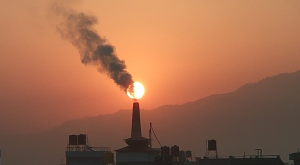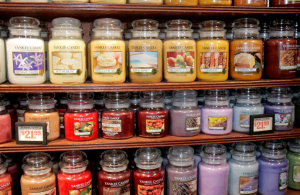
Boom, Sparkle… Cough? The Toxic Truth About Fireworks
If you would like to listen to a banger while reading this July 4th article, may I suggest this?
Every July 4th, the night sky erupts in a dazzling display of light and color. Kids point upward in awe. Dogs tremble under beds. And for many of us, the lingering haze is just part of the spectacle. But here’s the jaw-dropper: some of that glittery smoke is packed with toxic metals—like lead and copper—at levels that would make a chemistry teacher cringe.
A recent study from researchers at NYU School of Medicine and Columbia University reveals a hidden hazard in our favorite holiday tradition. While we ooh and ahh at the colors, we may also be inhaling particles that could inflame our lungs, stress our cells, and pose serious health risks, especially for vulnerable groups.
So… what’s really in that smoky trail?
Fireworks: Not Just Harmless Fun
The research team tested particles released by 10 popular firework types—like the crowd-pleasing Colorful Storms and the innocently named Black Cuckoo. Instead of launching them into the air, the team ignited them inside a specialized steel chamber to capture the airborne dust and smoke. What they found was more than just burnt gunpowder.
Using powerful microscopes and x-ray analysis, the scientists discovered high concentrations of metals. And not just any metals—these were elements added on purpose to create the brilliant hues we love: strontium for red, copper for blue, barium for green. But there was also lead—yes, that lead—in shockingly high amounts. One firework sample (Black Cuckoo) clocked in at over 40,000 parts per million of lead. That’s not a typo.
Let’s put it in perspective: leaded gasoline was banned decades ago due to health concerns. Yet here it is, exploding above our neighborhoods.
The Spark Inside Our Lungs
Collecting the particles was just the beginning. The team next exposed human lung cells—specifically bronchial and blood vessel lining cells—to these firework particles in the lab. They weren’t looking for dramatic cell death. Instead, they focused on something sneakier: oxidative stress.
Oxidative stress is like your body’s version of internal rusting. When cells are exposed to harmful substances, they release reactive oxygen species (ROS)—tiny chemical sparks that can damage DNA, trigger inflammation, and mess with your immune system. It’s like your cells are calling in an emergency alert.
The fireworks triggered these alarms.
Some particles produced more ROS than typical urban pollution. In fact, one firework produced a response 5 times stronger than ambient New York City air. And the biggest offender? You guessed it—Black Cuckoo, with its sky-high lead and copper content.
From Lab Bench to Living Breathing Mouse
To find out if these effects happen in real life—not just petri dishes—the researchers introduced the particles into the lungs of live mice. Again, Black Cuckoo caused a storm: mice exposed to even small doses had significantly more lung inflammation than those given cleaner samples.
Translation? This isn’t just theoretical. These particles may very well be affecting humans, especially people with asthma, heart conditions, or those who live near frequent firework displays (think theme parks or city events).
Wait… Why Is This Legal?
Here’s where it gets murky. Fireworks are often manufactured overseas with minimal regulation of their contents. Color and spectacle are top priorities, not safety. And because these displays are sporadic and seasonal, health agencies often exclude them from routine air quality monitoring.
But the researchers argue that we shouldn’t ignore the spikes. National data shows that metal levels in U.S. air—especially copper, barium, and strontium—surge around July 4th and New Year’s. These are real exposure windows.
Some companies, such as Disney, have already begun phasing out traditional fireworks in favor of cleaner alternatives, including LED light shows and compressed air launches. It’s not just good PR—it’s good science.
What Can We Do?
We’re not saying cancel fireworks entirely (no one wants to be that neighbor). But with what we now know, there are smart ways to celebrate safely:
- Push for cleaner fireworks: Manufacturers can switch to less toxic colorants and modern ignition systems.
- Support alternatives: Drone light shows and laser displays are on the rise—and they’re stunning.
- Stay aware: If you or your kids have respiratory issues, consider watching from indoors with air purifiers running.
- Demand transparency: Like food and cosmetics, fireworks should disclose what’s inside.
Let’s Explore Together
We love fireworks for their joy and spectacle. But it’s time to look behind the sparkle and ask: at what cost?
🎆 How do you feel about fireworks now that you know what’s in the smoke?
🎆 Would you trade your local firework display for a high-tech light show if it meant cleaner air?
🎆 What’s the most surprising science fact you’ve learned this year?
Share this post with your fellow science lovers—or your city council. The next time you’re watching the sky light up, you’ll know a little more about what’s raining down.
Because science isn’t just fascinating. It’s firework-level explosive.



